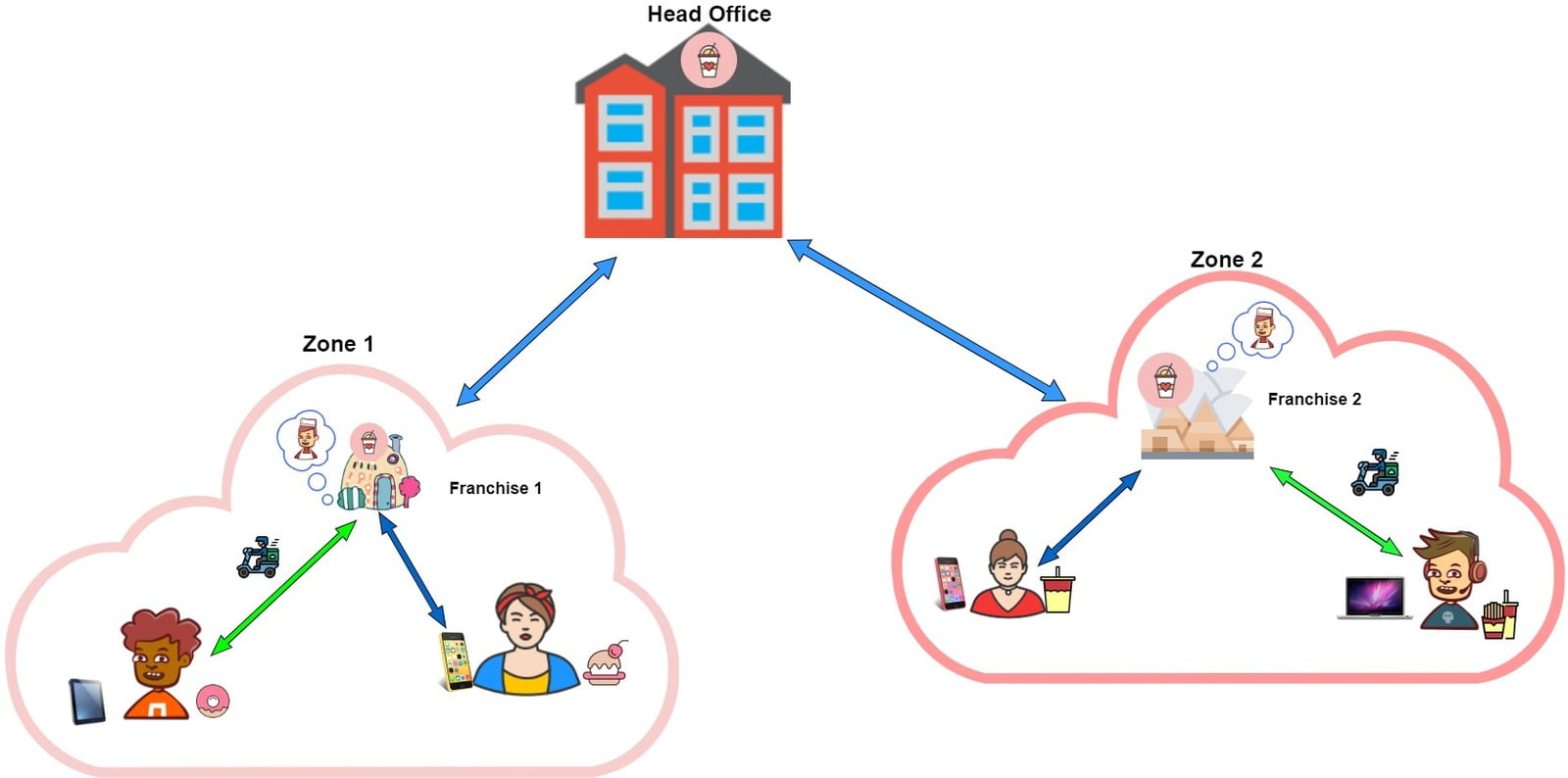
“An entrepreneur is someone who has a vision for something and a want to create.”
— David KarpIntroduction
In this blog, we will discuss about the usage of Customer Portal Users and the developer accounts relevant to Zoho Creator applications. The correct purpose and way to use these two different groups of users by configuring the right roles/permission sets will be discussed here.
Profile/Developer Accounts
These types of users are the internal organization users and the set of developers, application admins and other major players who are part of the company who purchased Zoho Creator and developed the application. They are responsible for configuration, development, managing master data, setting up workflows, roles, application setting changes, Audit management and backup management of the applications, etc.
They primarily have email accounts/login accounts that belong to the same domain as the subscriber/super admin account. For example, if the super admin/subscriber account belongs to XYZ.COM, all these set of users should have their email accounts come under XYZ.COM only.
At times, the developers may not belong to the same organization. In that case, if the external consultant who develops the application can be added into this set of accounts by configuring the account as a developer. This is the only exception where a developer account domain varies from the subscribed user domain. Rest of the users belonging to any other roles must be of this domain.
In terms of the user subscription for Zoho Creator, the licensing cost is decided upon the number of this group of accounts/users you have purchased.
Customer Portal Accounts
Customer Portal accounts are meant to be used by any users who are outside the organization and will be keen to use your application’s specific features. The users include your vendors, customers, visitors of your app who signed up, etc. Unlike the profile users, customer portal users can login via a portal which can be a default Zoho Creator Public domain or a custom domain which can be configured.
The portal users can be grouped based on different permission sets. Accordingly, you can restrict the use of a portal user to selectively see his/her records or reports alone. Other reports/forms will be completely hidden.
These set of users will be available as an add-on feature in Zoho Creator subscription. (As of date, this feature is available only for Premium Plans.)
Use Case

Set up Profile Account
To develop the application, you should have a developer account /super admin account to start with. Assuming this account is purely your application owner account.
The application can be developed in such a way that generalized forms like order entry, billing, order status, etc can be utilized by all franchises. Likewise, the design of relevant reports and pages should be done by this account.
Lastly, before on boarding all Franchises, you have to define the different permission sets. Let us assume the restaurants are present in New York, Chicago and San Francisco.
We have to create 3 different permission sets/groups and the relevant forms/reports mapping to these permission groups. The reports should be designed in a proper filter so that the records of particular location data should not be visible to another location.
Configure the customer portal domain according to the requirement of either the Zoho Default or a domain you own.
Setting up customer Portal Users
With the add-on purchased already for on boarding customer portal users, you can simply create the list of personnel’s and map them into the relevant group.
For example, person who is part of New York operations, must be configured under the New York Permission groups.
This person will receive an invitation email to Sign Up/setting up Password for the first time. Upon setting a password, he/she will be able to login to the portal and see the forms/reports relevant to his profile.
Also, this user has no visibility of data over Chicago and San Francisco Customer Portal users.
With the clear demarcation of customer portal users, an application can be made in a generic manner and can still solve the purpose of an organization which runs with different set of personnel with defined roles without compromising data breach.
For setting up multiple users/profiles, please refer the below blog:
https://www.rysats.com/blogs/post/zoho-creator-profile-setup-for-multiple-users
Support of Mobile App for both types of users
Zoho Creator Mobile App can be used by the profile users, Customer Portal Mobile App can be used by the customer portal users for mobile/tab usage.
Conclusion
As stated above, with the right choice of segmentation of user base, an application created in Zoho Creator can be efficiently managed with different user base with clear split of their roles/permissions/access requirements with a single application.
